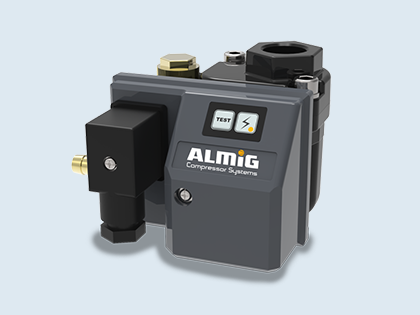No industrial or craft enterprise can do without compressed air. It is used in so many different technical ways that any list of applications would remain incomplete.
To ensure optimal use of compressed air, it should be dry, clean and, depending on the application, oil-free. Compressed air treatment is therefore absolutely necessary. However, if it is omitted or not individually adapted to the requirement profile, this has a negative effect on the entire compressed air system. It can lead to unnecessary production downtimes and shorten the service life of compressed air consumers.
Reason enough to pay individual attention to the correctly matched compressed air quality.
Compressed air treatment:
- prevents corrosion, wear and malfunctions in the pipeline network
- improves the efficiency of the compressed air system
- prolongs the service life of compressed air consumers
- measurably reduces production costs
- increases the quality of your products
- increases productivity
Options for compressed air preparation

The overview is intended as a general recommendation for action; the use of various treatment components must be assessed individually on a case-by-case basis. This overview does not claim to be complete.
1) Attainable particle class assuming correctly executed piping and commissioning.
2) Achievable total oil content depending on the intake air and the compressor oils used.
The compressed air classes refer to standard conditions. When generating oil-free compressed air, the intake air and ambient conditions also have an influence on the quality. Different service lives for AFC and ALM-AC must be taken into account.

Removal of residual water from compressed air

Reliable condensate management

Clean compressed air for the highest demands and requirement profiles

Refrigeration dryer ALM-RD - clean and dry compressed air

Dry compressed air with extremely low pressure dew point

Complete removal of oil droplets and oil vapors from compressed air.
To produce one cubic metre of compressed air at an overpressure of 10 bar, a compressor has to suck in eleven cubic metres of ambient air.
Together with this air, it also sucks in all the impurities it contains, like a large hoover: Dust, vapours, oil vapours, chemicals, etc.. Added to this is the natural humidity. Despite high-quality intake filters, all these components of the intake air are found in the compressed air. The substances that were distributed over eleven cubic metres of ambient air before compression are now concentrated in a single cubic metre of compressed air. In order to enable trouble-free operation, dirt, water and oil must therefore be separated from the compressed air.
Humidity
Depending on the ambient conditions, compressed air contains moisture. Depending on the application, this moisture must be removed from the compressed air.
There are the following possibilities:
- Cyclone separator: removes free water droplets from the compressed air.
- Refrigeration dryer: possible dew point up to max. +3 °C.
- Adsorption dryer: possible dew point down to -70 °C.
Which drying is required in each individual case depends on the consumers being operated.
Symptoms of incorrectly designed drying are moisture in the compressed air network, icing in winter or increased component wear due to corrosion.
To drain moisture from the compressed air system and dispose of it properly, it is recommended to use:
Solid impurities/oil
In addition to moisture, compressed air is also contaminated with particles and oil. To remove these components, the use of filters is recommended.
How:
- Coarse filter
- Microfilter
- Submicrofilter
- Activated carbon filter
- Activated carbon adsorber
By combining different treatment methods, the purity classes that are prescribed or recommended for the respective applications can be achieved.
Compressed air storage
Compressed air tanks are used to store the generated compressed air. The required size is determined by calculation.





